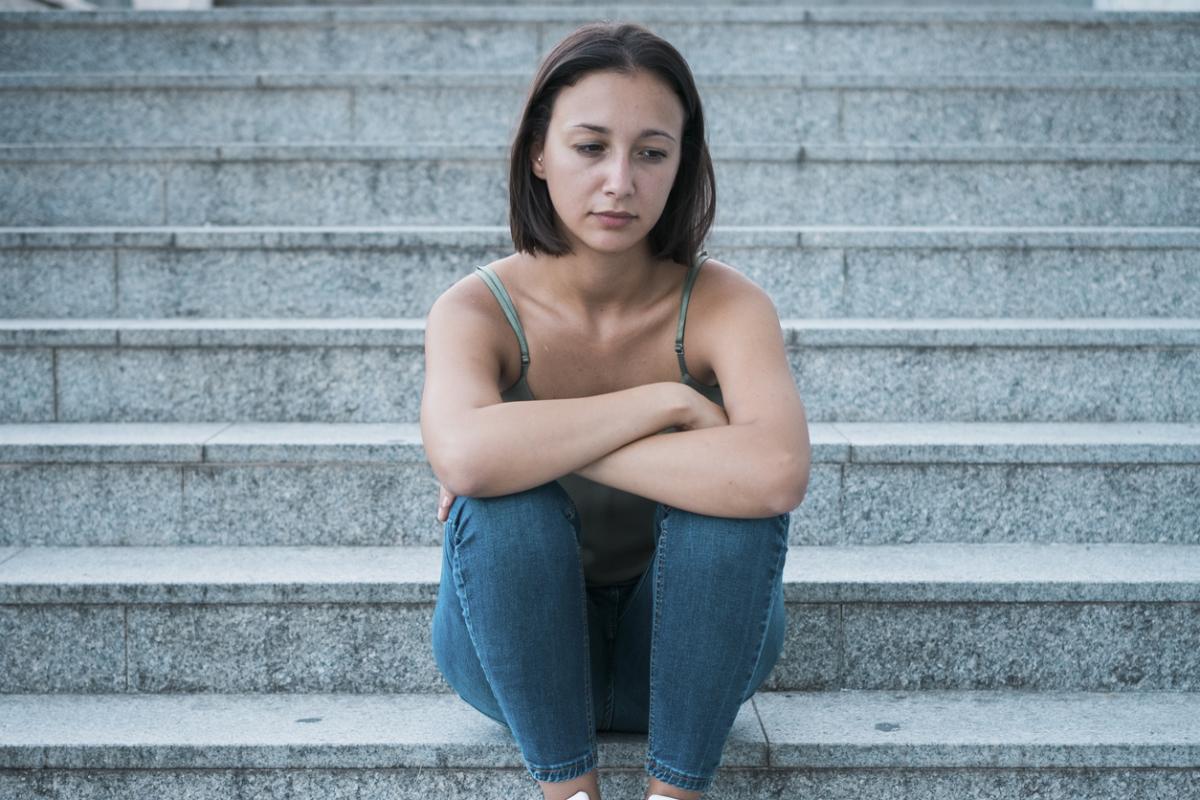While the country continues to battle the coronavirus, college health professionals are also monitoring a growing crisis among young adults struggling with mental health problems, including suicidal ideation, anxiety and depression related to the pandemic.
Several recent surveys of students suggest their mental well-being has been devastated by the pandemic’s social and economic consequences, as well as the continued uncertainty about their college education and postcollege careers. Still reeling from the emergency closures of campuses across the country during the spring semester and the sudden shifts to online instruction, students are now worried about the fall semester and whether campuses that reopened for in-person instruction can remain open as COVID-19 infections spread among students and panicked college administrators quickly shift gears and send students who’d recently arrived back home.
Kelly Davis, director of peer advocacy supports and services for Mental Health America, or MHA, said she anticipates an influx of students who have not previously sought mental health support from their colleges will be requesting resources this fall. She’s worried many counseling centers are unprepared.
“Around October, there tends to be a dip in mental health, and that’s in students who are on campus and not during a pandemic,” said Davis, who leads MHA’s Collegiate Mental Health Innovation Council. “That’s going to be a really intense time … I think we’re going to run into a larger version of the same problem we’ve seen on campus — people are struggling, we tell them to reach out for help, but we didn’t build the help.”
Existing and prevalent problems in colleges mental health support systems, such as long wait times and understaffing, could be exacerbated by increased demand and leave students without the help they need, she said. Colleges may be forced to improve access to these resources on the fly, but Davis believes the widespread shift to remote learning by colleges this spring proved that “when schools are pushed, they can act.”
A report released by the Centers for Disease Control and Prevention last month about the pandemic’s effect on mental health identified that a disproportionate number of 18- to 24-year-olds — about one-quarter of those surveyed — had “seriously considered suicide” in the last 30 days. A separate study by the Student Experience in the Research University found that students are screening positive for depression and anxiety at higher rates than in previous years. Despite these data, students have said the pandemic has made it harder to access mental health care.
Another report from Chegg.org, the research and advocacy arm of the student services company of the same name, and four youth mental health advocacy and suicide prevention organizations released on Sept. 10 found that 58 percent of college students surveyed said they were “moderately,” “very” or “extremely” worried about their own mental health. Forty-six percent said they feel anxious specifically about returning to a physical campus during the fall semester, said the report.
New restrictions by colleges on students’ social interactions and shared physical spaces, and the ability to freely interact without a nagging anxiety about potential exposure to the coronavirus, can affect students in unique ways, said Asia Wong, student health services and counseling director at Loyola University New Orleans. Students may feel isolated or lonely because they can’t have visitors in their residence halls. Relationships between roommates can be complicated by students attending unsafe gatherings and putting one another at risk. Some students may be struggling with the loss of a parent or other relative to COVID-19 and may be away from their support networks, Wong said.
Braden Renke, a junior at Franklin & Marshall College in Pennsylvania and creator of a mental health advocacy group on campus, The Pizza Project, has anxiety disorder and said in an email that the various “unknown” factors about the pandemic have been particularly difficult for her. Limited access to campus in the spring and social distancing have made it harder for her organization to share information about available support services and gather students to discuss mental health over pizza, which are the main objectives of the group, Renke wrote. The students she has connected with say their mental health has “plummeted,” she wrote.
“The workload has tremendously increased and at a school like F&M where academic rigor is a major value, students feel extra pressure to perform in extremely unknown circumstances,” wrote Renke, who is a former member of the MHA collegiate mental health council. “Many students are at home in unstable environments, are struggling with financial hardships, and are struggling with the lack of a ‘normal’ routine.”
College staff members who manage health services must now balance servicing students’ mental health needs with an unprecedented level of monitoring their physical health, through COVID-19 testing, contact tracing and related care. Wong said nearly her entire focus since students returned to campus for the start of classes on Aug. 24 has been on students’ physical health. Meanwhile, mental health counseling has remained “in the margins,” she said.
“I used to say that as director of counseling and student health that health takes up 25 percent of my time and counseling took up about 75 percent of my time,” Wong said. “Now student health takes up about 110 percent of my time.”
Janis Whitlock, director of the Cornell University Research Program on Self-Injury and Recovery and senior adviser to the Jed Foundation, said the sense of “possibility” that drives young people through their early life is diminished by being physically isolated. JED, a youth mental health advocacy and suicide-prevention organization, leads a campus program that has worked with more than 300 colleges and universities in the United States to improve mental health resources.
“For young adults, so much that’s pulling them into the world is possibility,” Whitlock said. “The future is uncertain for all sorts of reasons. They don’t know that things will go back to normal … As someone who’s had a lot of life, I’m not going to be impacted in the way that they will be.”
Even as some mental health reports signal troubling trends among college students, other experts believe the problem may not be as bad it seems.
Harry Rockland-Miller, a clinical psychologist who directed the Center for Counseling and Psychological Health at the University of Massachusetts at Amherst for more than 20 years, noted that a Sept. 8 post from the Center for Collegiate Mental Health at Pennsylvania State University, or CCMH, contradicts other findings and states that students’ levels of stress are similar to what they were in 2019, despite the pandemic.
The post said that the reports about “worsening college student mental health may be more complex” than they are made out to be.
The CCMH, which collects national data directly from students who seek help at college counseling centers, reported that the average levels of anxiety, depression, suicidal ideation and other forms of stress among students seeking help during the 2018-19 and 2019-20 academic years were “very similar,” the post said. The center’s post analyzed data through May of both years.
“While it has been commonly suggested that student mental health distress worsened dramatically following the COVID-19 response in March 2020, CCMH data shows that the distress of students seeking services was generally similar to the same time periods the year prior, with only slight increases in Academic and Family Distress,” the post said.
But Wong said students now seeking help at the counseling center at Loyola have not had appointments before, indicating an increase in students that were not previously experiencing mental health problems. The center is continuing to conduct virtual counseling throughout the fall semester, and in the two weeks since classes started, 6 percent of the university’s student body has had an appointment with the center’s staff, which Wong called “significant.”
The center had a 10 percent increase in appointments and 5 percent increase in students who had not previously gone to the center during the spring semester compared to the previous year. The center also did not have the drop-off in appointments that typically occurs during the summer, when students leave the campus, Wong said. Like most campuses, Loyola quickly pivoted in the spring to teletherapy and also connected students to a licensed therapist via phone or videoconferencing, which the center already had set up, she said.
Rockland-Miller said the realities of the pandemic have given rise to more teletherapy options at colleges. In March, some colleges did not yet have the technology or state licensing to be able to seamlessly continue counseling students and had to start from scratch. Now, some are relying entirely on teletherapy if academic instruction is online or in-person counseling is deemed unsafe.
The virtual options are ideal for the mix of in-person, online and hybrid academic instruction modalities colleges adopted for the fall semester, Rockland-Miller said. Students at a given campus could be living in a residence hall or miles away in their hometown and still get mental health support from the college or be connected to a counselor or psychiatrist. This requires “flexibility” and “nimbleness” by college officials to provide a wide variety of options that cross state lines, Rockland-Miller said.
“There’s so many times when the student is remote and not local,” he said. “There was some utilization of teletherapy options as part of the spectrum of care, but there’s full-on engagement now, in a way that I don’t think anyone anticipated.”
Wong said some first-year students at Loyola who were getting mental health treatment while in their hometowns have continued that treatment via teletherapy with their care providers back home rather than transitioning to an on-campus provider. This can be helpful for both the student, who can remain in the care of a trusted therapist, and the university, which does not have to take on an additional student patient, she said.
“We’re seeing more people who are brand-new to therapy rather than people transitioning to care,” Wong said. “Of course it is helpful … to not have to stop abruptly and start with a new therapist while social distancing in the middle of a pandemic. That’s helpful for them and us.”
While COVID-19 may make it harder for students to access the mental health resources they need, one potential bright spot is that the pandemic has reduced the stigma of needing and getting mental health support. Whitlock, director of the Cornell research program, said in some ways there is now a “lower bar for seeking help” because of how much mental health is now talked about and new services are offered. Davis, of Mental Health America, said the pandemic has been a “reckoning” for mental health discussions.
“The hopeful piece for me is it seems like we’re at an inflection point,” Davis said. “All of a sudden, it’s OK to talk about mental health.”















